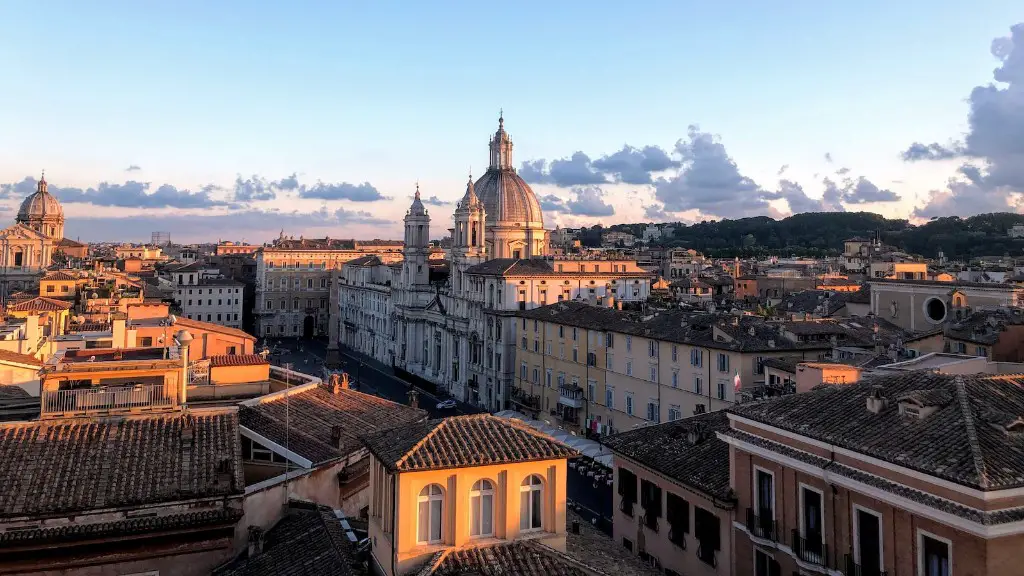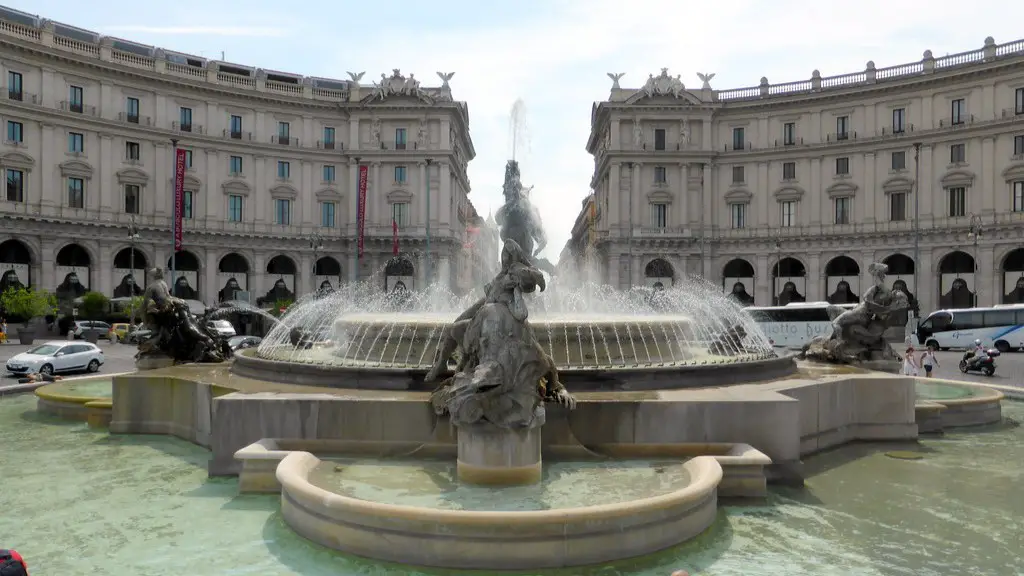Introduction
The ancient Romans are remembered for their incredible buildings, astute political systems, and well-oiled military machinery. But few remember them for the religion they practiced in their ancient civilization. Ancient Rome had a complex faith system, with the primary religion blending traditional Roman beliefs with those of the Greeks, Egyptians and ultimately, the Jews. It was a multi-layered set of beliefs that built upon and interacted with each other to give Rome its own unique religious identity.
Primordial Deities
Long before the Romans adopted their more widespread deities, they believed in deities that they described as “primordial” or “underworld” gods. These deities existed beneath the earth and were associated with specific aspects of the human life cycle. Examples included the god Terminus, who presided over boundaries, and the goddess Tellus, who was associated with fertility.
State Religion
By the 2nd century BC, the Romans had adopted Greek gods and worshiped them as their state religion. In the Roman Empire, the ruling class was known as the patricians, who chose which gods the state would venerate. The most significant of these gods was Jupiter, whom the Romans believed to be their chief guardian deity. He was known as a protector of justice, the overseer of fate and the arbiter of order.
Gods of the Gentry
The members of the gentry had their own gods as well. These gods included Minerva, the goddess of wisdom, and Mars, the god of war. They also revered Venus, the goddess of love, and Apollo, the god of the sun. Other deities worshiped included the god Pluto, the god of the underworld, and the goddess of the harvest, Ceres.
Rituals & Festivals
These deities were honored with rituals and festivals. The most important of these was the Feriae, celebrated between the ides and the nones of March. During this festival, the Romans paid homage to the gods with processions, sacrifices and games. Other annual festivals included the Saturnalia, the Lupercalia, and the Floralia, which focused on fertility and agriculture.
Mythology
The Romans also had their own mythology, which was based on the stories of the gods and their interactions with mortals. One of the most famous Roman myths was the story of Romulus and Remus, who were the founders of Rome. Other famous stories included the twelve tasks of Hercules and the story of Aeneas and the founding of a new nation.
Religious Beliefs
These beliefs were tied to important concepts in Roman culture. For example, they believed in the concept of fate, in which the gods dictated the course of their lives. They also believed in the power of oracles, where their deities could prophesy their future. The belief in omens and auspicious signs was also popular among the Romans.
Religious Practices
As for practices, the ancient Romans followed three principal paths: private, public, and magical. Private practices included following dietary restrictions and abstaining from certain sexual practices. Public rituals included offering sacrifices to the gods in temples and during annual festivals. Magical practices were less prominent, but no less important, as they aimed to tap into the divine power of the gods to manipulate certain events.
Mystery Cults
In the late years of the Roman Empire, mystery cults began to emerge. These cults seemed to provide an escape from the strict government-imposed religions of the state, and thus drew followers from all classes of society. They blended traditional Roman beliefs with those of the Greek, Egyptian and Jews. Examples of such cults included the cult of Dionysus, the cult of Isis, and the cult of Mithras.
Legacy
Ancient Rome has left us a complex religious legacy. Its faith system blended elements from numerous cultures and created a unique religion based on deferred loyalty to the gods. It was a system of worship that drew from astrology, mythology, and private and public rituals to create an intricate web of religious beliefs and practices.
Contemporary Developments
The study of ancient Rome’s religion continues throughout the world today, with many researchers attempting to uncover the mysteries of its rich world of gods and rituals. Contemporary studies range from philosophical interpretations to archaeological excavations, all with the aim of understanding the power behind this remarkable ancient civilization.
Impact on Modern Religion
Although ancient Roman religion no longer exists, the influence of the gods, rituals, and beliefs on modern religions around the world is still felt today. Christianity, in particular, has borrowed much from the Roman religion, including its icons, rituals, and practices. Christmas, for example, is believed to have been established during the time of Emperor Constantine, and the structure of the Trinity is believed to have been taken from the trinity of Roman gods: Jupiter, Juno, and Minerva.
Continuing Research
The more modern interpretations of Roman religion differ greatly from the original practices, thus creating a rich and varied field of study for contemporary researchers. Studies range from those that focus on material evidence to those that attempt to understand the psychology and philosophy behind the religion. All agree, however, that it is a fascinating subject and one that is still very much alive in our time.



